Linked INdependent Cars have the potential to be a transportation hybrid with far-reaching benefits, affecting such diverse subjects as: quality of life, ecology, safety, and cost.
The short-comings of public transportation: walking to and from the bus stop or train station, and a lack of privacy, will continue to keep most commuters in their cars. However, in their cars, the same commuters have to dedicate their time and attention to driving, often on congested and chaotic freeways. And, the short range of electric cars insures that long distance commuters will keep polluting the air.
The short-comings of public transportation: walking to and from the bus stop or train station, and a lack of privacy, will continue to keep most commuters in their cars. However, in their cars, the same commuters have to dedicate their time and attention to driving, often on congested and chaotic freeways. And, the short range of electric cars insures that long distance commuters will keep polluting the air.
Linc Transportation
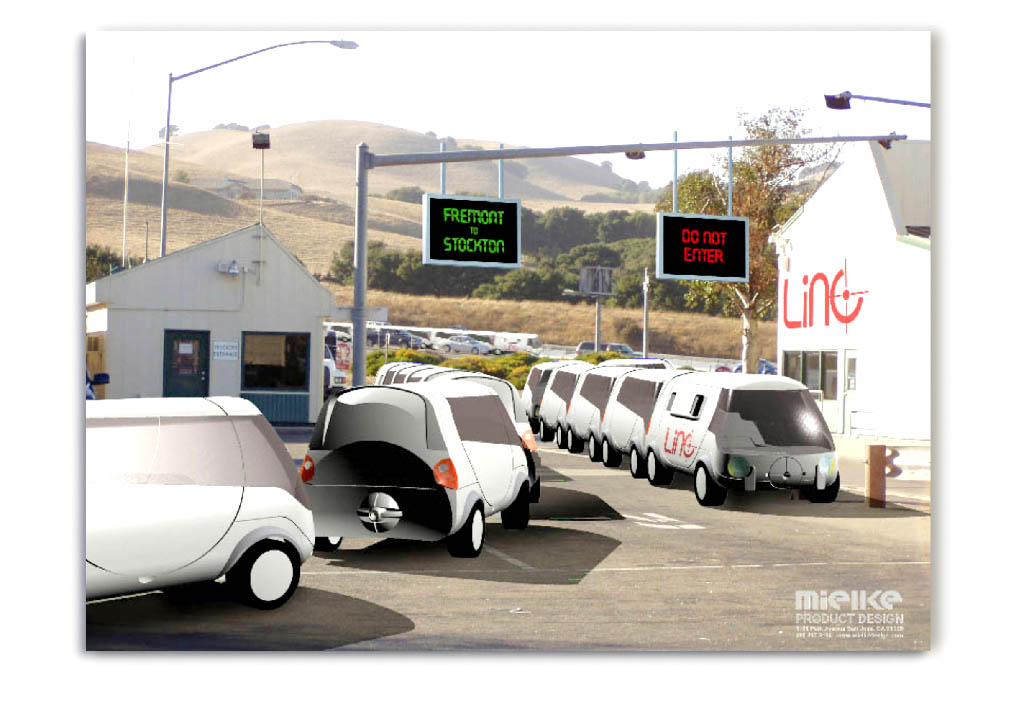
One solution to this dilemma is to link independent electric cars together at a depot, to be towed by a "tractor" to their general destination like a train, while having their batteries recharged enroute. Drivers can relax and use their commuting time how they please, in the privacy of their own car. Upon arrival, the cars are separated from one another, and drive away to their specific destinations.
With the exception of roadside linking depots, this system uses existing freeways, and would not require new or specific infrastructure in order to operate.
With the exception of roadside linking depots, this system uses existing freeways, and would not require new or specific infrastructure in order to operate.
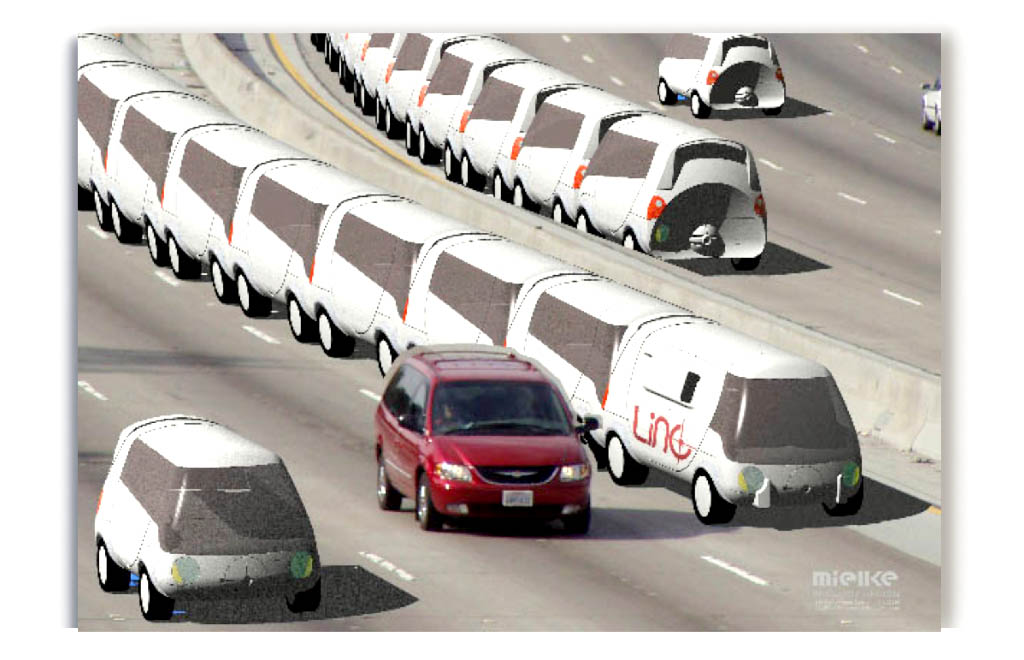
While service for long distance, metropolitan commuters would be an obvious benefit, this system could also be enjoyed by people on cross county trips who want to shed the responsibility of all day driving, but still want independent transportation at points along the way, and at their destination.
LINC drivers/passengers could lease their cars, and would be automatically charged for towing while linked. A monthly bill would include charges for both.
LINC drivers/passengers could lease their cars, and would be automatically charged for towing while linked. A monthly bill would include charges for both.
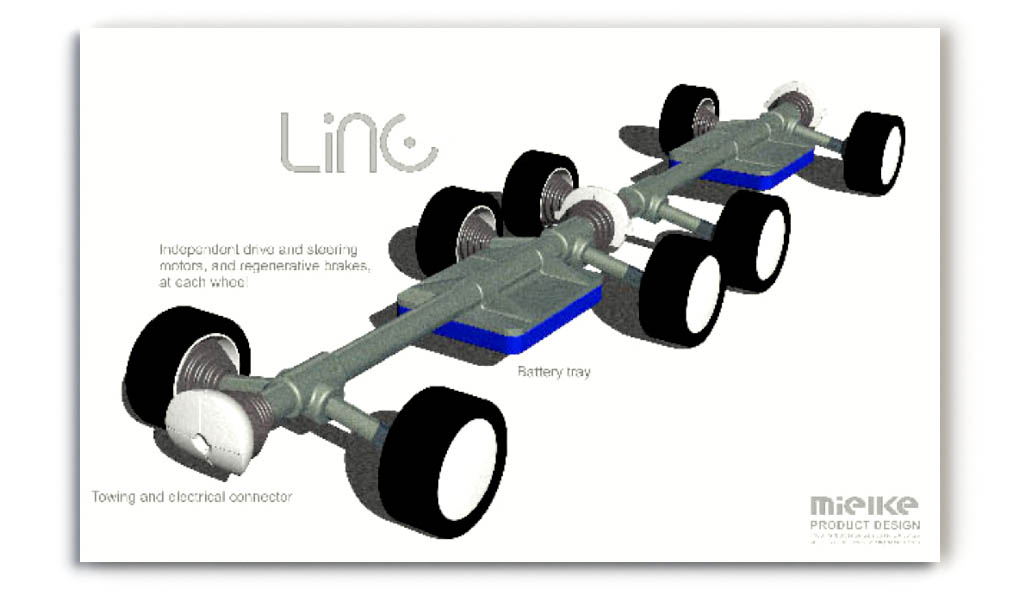
The compressed line of linked cars would reduce freeway congestion, and would save energy by being collectively more aerodynamic. The large scale of the tractor's natural gas power source could enable energy production currently not available in small cars. The cars could collectively brake for greater control, and collectively apply drive up hills to reduce the power requirements for the tractor, and the tensile load on the train's overall structure. Collective, all wheel drive would also provide greater control when slippery conditions exist.
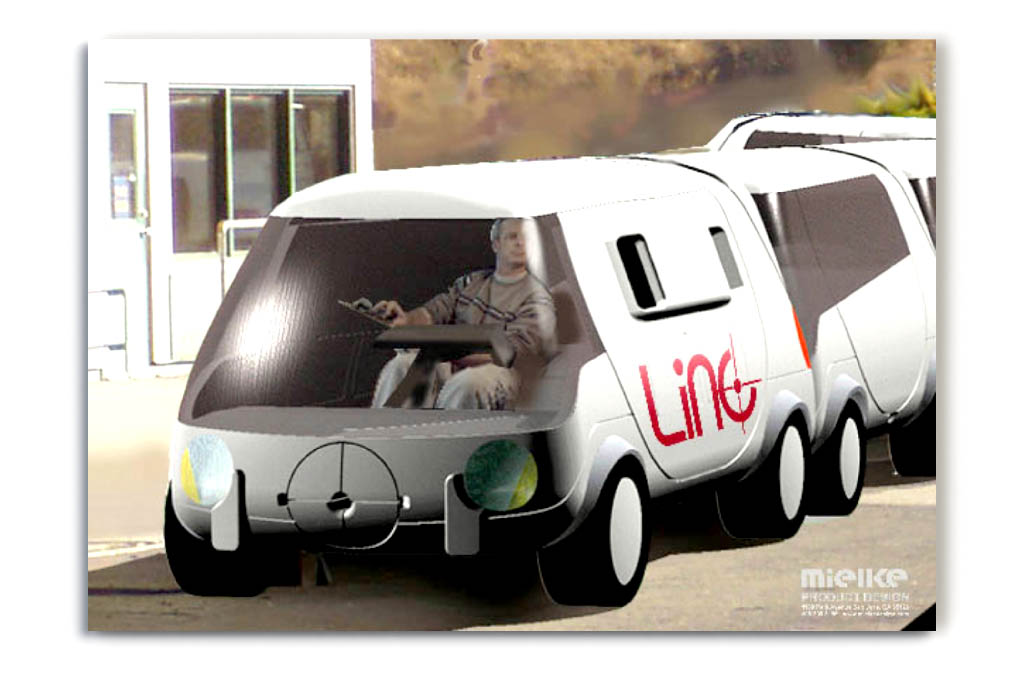
While the costs for developing and tooling up for manufacturing any vehicle is huge, the tractor and the car could share many components, chassis components and body panels for example, to reduce costs. Because this system is functionally unique, it would not have to compete directly with the traditional automotive industry. The LINC system also could be grown incrementally, reducing upfront cost, and spreading future investments over time, as new locations and routes demand the service.
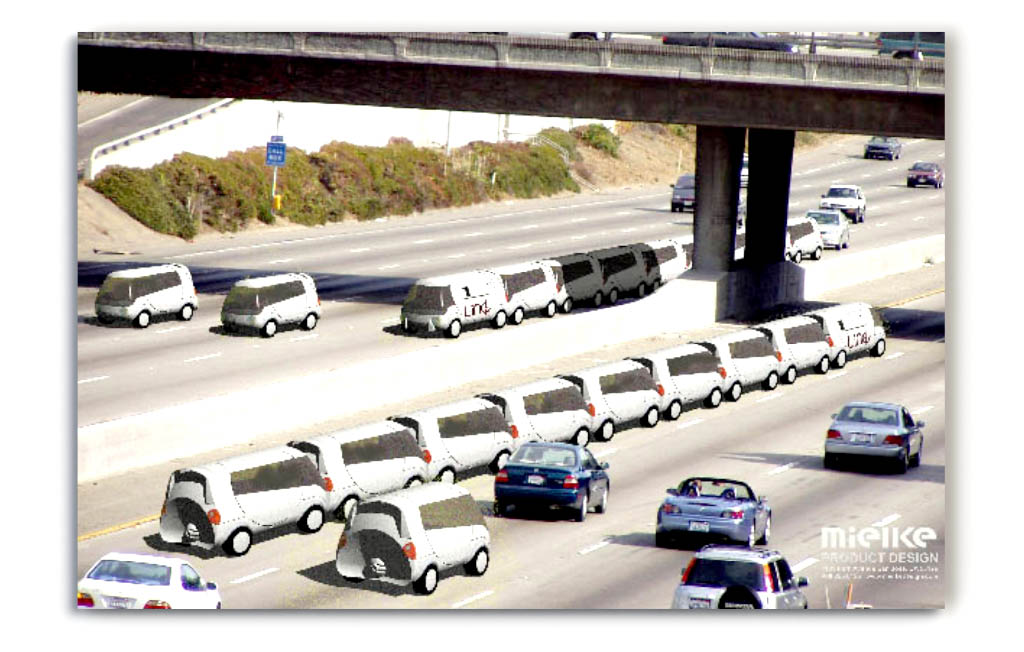
Driverless car automation technology could enable "on-the-fly" linking and unlinking, eliminating the need for depots altogether, and providing a more flexible service.
There are no significantly new or undeveloped technologies that are required for this system to be functional, just a new use for existing materials and components, and most importantly: a new concept of what mass transportation is.
There are no significantly new or undeveloped technologies that are required for this system to be functional, just a new use for existing materials and components, and most importantly: a new concept of what mass transportation is.


